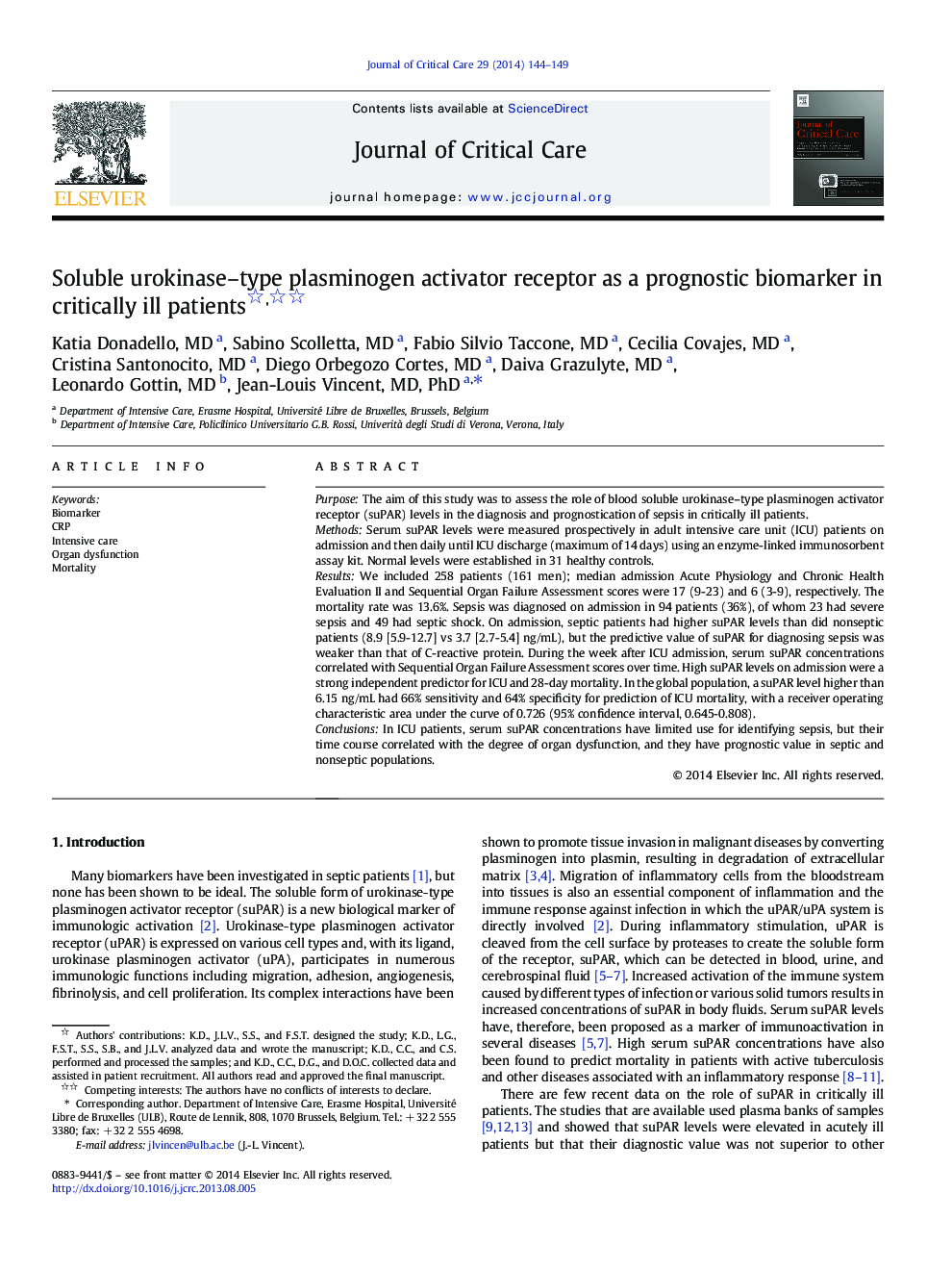| Article ID | Journal | Published Year | Pages | File Type |
|---|---|---|---|---|
| 2764670 | Journal of Critical Care | 2014 | 6 Pages |
PurposeThe aim of this study was to assess the role of blood soluble urokinase–type plasminogen activator receptor (suPAR) levels in the diagnosis and prognostication of sepsis in critically ill patients.MethodsSerum suPAR levels were measured prospectively in adult intensive care unit (ICU) patients on admission and then daily until ICU discharge (maximum of 14 days) using an enzyme-linked immunosorbent assay kit. Normal levels were established in 31 healthy controls.ResultsWe included 258 patients (161 men); median admission Acute Physiology and Chronic Health Evaluation II and Sequential Organ Failure Assessment scores were 17 (9-23) and 6 (3-9), respectively. The mortality rate was 13.6%. Sepsis was diagnosed on admission in 94 patients (36%), of whom 23 had severe sepsis and 49 had septic shock. On admission, septic patients had higher suPAR levels than did nonseptic patients (8.9 [5.9-12.7] vs 3.7 [2.7-5.4] ng/mL), but the predictive value of suPAR for diagnosing sepsis was weaker than that of C-reactive protein. During the week after ICU admission, serum suPAR concentrations correlated with Sequential Organ Failure Assessment scores over time. High suPAR levels on admission were a strong independent predictor for ICU and 28-day mortality. In the global population, a suPAR level higher than 6.15 ng/mL had 66% sensitivity and 64% specificity for prediction of ICU mortality, with a receiver operating characteristic area under the curve of 0.726 (95% confidence interval, 0.645-0.808).ConclusionsIn ICU patients, serum suPAR concentrations have limited use for identifying sepsis, but their time course correlated with the degree of organ dysfunction, and they have prognostic value in septic and nonseptic populations.
